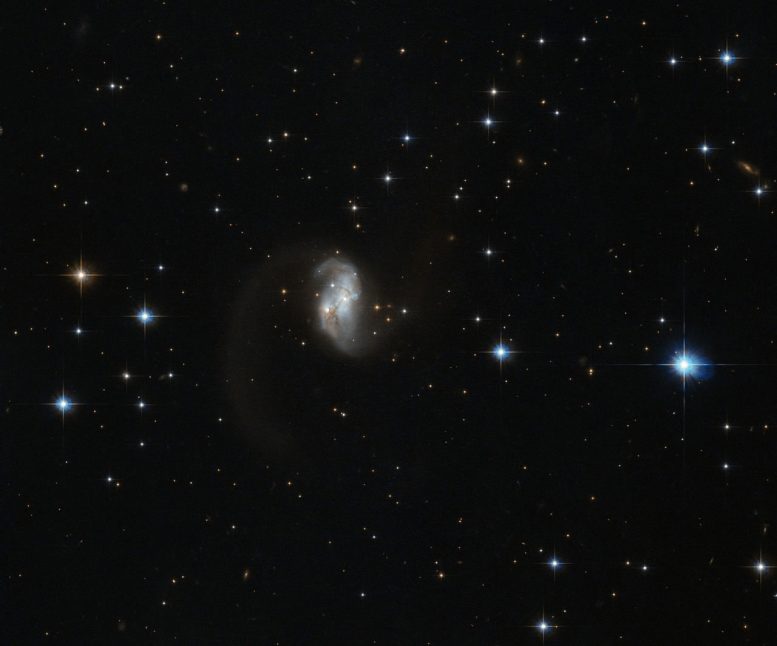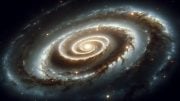
Hubble Space Telescope view of worm-like galaxy IRAS 23436+5257. Credit: ESA/Hubble and NASA, Acknowledgment: Judy Schmidt
In this new image captured by the NASA/ESA Hubble Space Telescope, you can see the worm-like galaxy known as IRAS 23436+5257. The shape is most likely the result of a collision and subsequent merger of two galaxies.
This charming and bright galaxy, known as IRAS 23436+5257, was captured by the NASA/ESA Hubble Space Telescope. It is located in the northern constellation of Cassiopeia, which is named after an arrogant, vain, and yet beautiful mythical queen.
The twisted, worm-like structure of this galaxy is most likely the result of a collision and subsequent merger of two galaxies. Such interactions are quite common in the universe, and they can range from minor interactions involving a satellite galaxy being caught by a spiral arm, to major galactic crashes. Friction between the gas and dust during a collision can have a major effect on the galaxies involved, morphing the shape of the original galaxies and creating interesting new structures.
When you look up at the calm and quiet night sky it is not always easy to picture it as a dynamic and vibrant environment with entire galaxies in motion, spinning like children’s toys and crashing into whatever crosses their path. The motions are, of course, extremely slow, and occur over millions or even billions of years.
The aftermath of these galactic collisions helps scientists to understand how these movements occur and what may be in store for our own Milky Way, which is on a collision course with a neighboring galaxy, Messier 31.









Nice shot. Almost certainly not a collision but the remnants of a quasar with it’s helical jets of re-ionized matter visible each side of the central toroidal AGN. The AGN is the last remains of the old accretion disc. the ‘ring’ is just visible around the central jet axis.
The flared outflow ‘tails’ are due partly to the precession of the two jets at the (‘SMBH’) centre of mass and partly as the intrinsic rotation of the whole central ‘bar’ (in it’s youth) seems to have commenced.
Looking very carefully outside the galaxy the gas / plasma halo matter can also be seen describing a very feint arc. this one is a little different to most, but then they all are. Centaurus A is approaching this stage in a while (in cosmic terms). The Hawk galaxy is a bit more advanced.
(ask for link to a fuller cycle description).